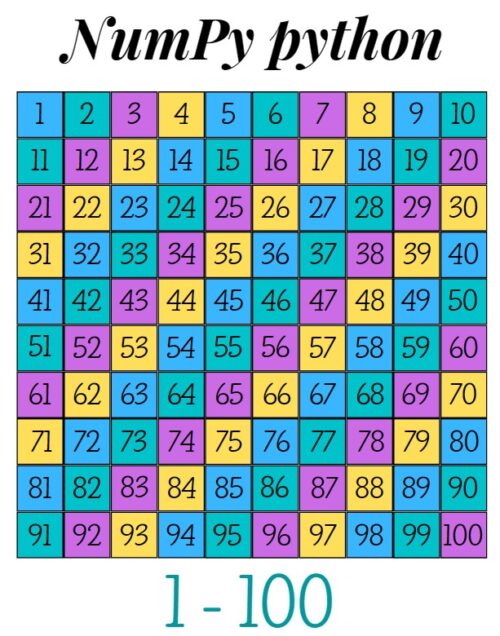Numpy library in python
NumPy is a powerful Python library for numerical computing. As the name suggest it’s a numerical related library. It provides support for arrays, matrices, and a wide variety of mathematical functions to operate on these data structures. Here are some key aspects of NumPy:
- Arrays:
NumPy provides a powerful array object that is similar to Python lists but allows you to perform mathematical operations on entire arrays or slices of arrays at once, making it significantly faster and more efficient for numerical computations. - Numerical Operations:
NumPy enables you to perform a variety of mathematical operations on arrays, including basic arithmetic, element-wise functions, linear algebra, Fourier analysis, and random number generation. - Efficiency:
NumPy is written in C and Fortran, making it much faster than traditional Python lists for numerical operations. It also provides an interface to C and C++ libraries. - Broadcasting:
NumPy can handle operations on arrays of different shapes and sizes. Broadcasting is a powerful mechanism that allows NumPy to work with arrays of different shapes in arithmetic operations. - Indexing and Slicing:
NumPy offers advanced indexing techniques, including slicing, masking, and fancy indexing, which provide more control and flexibility when working with data. - Integration: NumPy integrates seamlessly with other libraries and frameworks, such as SciPy (scientific computing), Matplotlib (plotting library), and Pandas (data analysis library).
- Multi-dimensional Arrays: NumPy supports multi-dimensional arrays and matrices. These structures are essential for representing and manipulating data in various scientific and engineering applications.
please go through the embedded python code in jupyter notebook. scroll down to see more codes and practice these codes.
Was this article helpful?
YesNo

1 thought on “Numpy library in python”